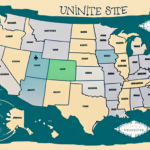Understanding UPS Shipping Weight Rates
UPS is one of the world's largest package delivery companies, offering a variety of shipping options with different pricing structures. One of the most critical factors in UPS shipping rates is the weight of the package. Understanding how UPS shipping weight rates work can help you make informed decisions about your shipping needs and ultimately save you money.
What are UPS Shipping Weight Rates?
UPS shipping rates are determined by several factors, including package weight, size, destination, and time frame. Weight rate refers to the cost of shipping a package based on its weight. UPS offers different types of weight rates, such as daily rates and retail rates. Daily rates are generally lower but require a UPS account and a specific level of shipping volume, while retail rates are available to anyone and allow for one-time shipments without an account.
Additionally, UPS provides dimensional weight rates, which consider the size of the package in addition to its weight. This means that if you're shipping a lightweight package that occupies a significant amount of space, you may be charged based on its size rather than its actual weight. To calculate dimensional weight, UPS uses a formula involving the length, width, and height of the package.
Other factors influencing UPS shipping rates include the destination and the chosen delivery time frame. Shipping to remote locations or opting for expedited shipping services can result in higher rates. It's crucial to consider all these elements to ensure you select the most cost-effective shipping option for your needs.
How are UPS Shipping Weight Rates Calculated?
UPS shipping weight rates are calculated based on the package's weight and the distance it needs to travel. Generally, the greater the distance, the higher the shipping rate. Different UPS services have varied weight rate structures. For instance, UPS Ground rates are based on package weight and distance, whereas UPS Next Day Air rates depend on package weight and the destination's zone.
UPS also considers the package's dimensions when calculating shipping rates to account for the space it occupies on delivery vehicles. The "dimensional weight" formula helps determine the shipping rate for larger, lighter packages. To calculate dimensional weight, UPS multiplies the package's length, width, and height and then divides by a dimensional weight divisor. If the dimensional weight exceeds the actual weight, UPS charges based on the dimensional weight.
Why is it Important to Understand UPS Shipping Weight Rates?
Grasping UPS shipping weight rates enables you to accurately estimate shipping costs and identify potential areas for savings. For example, consolidating multiple packages into a single shipment can sometimes lower overall shipping expenses. Additionally, knowing the exact weight of your packages helps avoid unexpected fees due to incorrect weight measurements.
Understanding these rates also allows you to choose the most cost-effective shipping method. UPS offers various shipping options, such as ground, air, and international services, each with its own weight and size restrictions and corresponding rates. By knowing your package's weight, you can compare different shipping methods and select the one that best fits your budget and delivery timeline.
Moreover, accurate knowledge of UPS shipping weight rates helps prevent delays and ensures timely delivery. Underestimating your package's weight may lead to processing issues and shipping delays, resulting in missed deadlines and dissatisfied customers. Properly measuring and declaring your package's weight aids UPS in streamlining the shipping process, ensuring your packages arrive on time and in good condition.
Factors that Affect UPS Shipping Weight Rates
Several factors influence UPS shipping weight rates, including:
- Package Weight: The heavier the package, the higher the shipping cost.
- Dimensions: Larger packages may incur higher rates due to the space they occupy.
- Destination: Shipping to more distant or remote locations increases the cost.
- Shipping Service Type: Different services (e.g., ground, air) have varying rates.
- Delivery Time Frame: Faster delivery options typically cost more.
- Special Requirements: Services like signature confirmation or insurance can add to the cost.
The distance between the origin and destination is a significant factor, as longer distances require more resources, thus increasing the shipping rate.
The type of item being shipped also affects the rate. Shipping hazardous materials or fragile items may necessitate special handling or packaging, leading to higher costs. Additionally, higher-value items may require extra insurance or security measures during transport, further impacting the shipping rate.
How to Determine the Correct Weight of Your Package for UPS Shipping
Accurately determining your package's weight is essential for calculating UPS shipping rates. Use a reliable scale to weigh your package, including any additional packaging materials like boxes or bubble wrap. If your package exceeds 70 pounds, it must be shipped via UPS Freight instead of standard UPS services.
Remember that UPS also considers package dimensions when calculating shipping rates. Measure the length, width, and height of your package and input these measurements into the UPS shipping calculator. This ensures you are charged accurately based on both weight and size.
If you're uncertain about your package's weight or dimensions, visit a UPS store or authorized shipping outlet for assistance. They can help you weigh and measure your package and advise on the appropriate shipping method and packaging materials to ensure safe and timely delivery.
Tips for Reducing Your UPS Shipping Weight Rates
Implementing the following strategies can help reduce your UPS shipping weight rates:
- Consolidate shipments into a single package when possible.
- Choose the most cost-effective shipping service based on weight rates and delivery time frames.
- Use lighter packaging materials.
- Avoid unnecessary packing materials that don’t add protection to your package.
Additionally, consider the dimensions of your package. UPS charges based on both weight and size, so using the smallest box or envelope that securely holds your items can help lower costs.
Take advantage of UPS discounts and promotions. If you ship frequently with UPS, consider enrolling in their loyalty program or negotiating volume discounts. Regularly check the UPS website for current promotions or special offers to save on shipping expenses.
Understanding the Different Types of UPS Shipping Services and Their Weight Rate Structures
UPS offers a variety of shipping services, each with its own weight rate structure. Some of the most common UPS shipping services include:
- UPS Ground
- UPS Next Day Air
- UPS 2nd Day Air
- UPS 3 Day Select
- UPS Worldwide Express
- UPS Worldwide Express Plus
Each service has a unique weight rate structure. For example, UPS Ground rates are based on package weight and distance, while UPS Worldwide Express rates depend on package weight and the destination country.
UPS also offers additional services that can be added to any of the above shipping options, including signature confirmation, insurance, and delivery confirmation. These services provide added security and peace of mind for both the sender and the recipient.
When selecting a UPS shipping service, consider the delivery time. While UPS Ground is often the most cost-effective option, services like UPS Next Day Air or UPS 2nd Day Air offer faster delivery times at a higher cost.
How to Compare and Choose the Most Cost-Effective UPS Shipping Option Based on Weight Rates
When selecting a UPS shipping service, it's essential to consider both weight rates and delivery time frames. Additionally, account for any special requirements, such as signature confirmation. To effectively compare rates and delivery times, utilize the UPS online shipping calculator or consult with a UPS representative for personalized assistance.
Common Mistakes to Avoid When Calculating UPS Shipping Weight Rates
Avoid the following common mistakes when calculating UPS shipping weight rates:
- Incorrectly measuring the weight of your package.
- Forgetting to include extra packaging materials in the weight measurement.
- Choosing the wrong shipping service or delivery timeframe.
Double-check your measurements and shipping options before finalizing your shipment to prevent these costly errors.
How to Negotiate Better UPS Shipping Rates Based on Package Weight
If you regularly use UPS for shipping, you may be able to negotiate lower shipping rates based on your shipping volume and package weight. Contact a UPS representative to discuss your shipping needs and inquire about available discounted rates or promotions.
Resources for Tracking and Managing Your UPS Shipping Costs Based on Package Weight
Managing UPS shipping costs can be challenging, especially for frequent or high-volume shippers. To streamline this process, utilize available resources such as the UPS website, which offers tools for tracking shipments, estimating shipping costs, and managing shipping history. Additionally, consider third-party software programs designed to help you efficiently manage your shipping expenses.
Case Studies of Companies that Have Successfully Reduced Their Shipping Costs by Understanding and Optimizing Their Package Weights for UPS Shipments
Many companies have successfully reduced their shipping costs by optimizing package weights and selecting the most cost-effective shipping options. Strategies they employ include consolidating shipments, using lighter packaging materials, and negotiating better rates based on shipping volume. By adopting these best practices, your business can also achieve significant savings on UPS shipping costs.
Conclusion
Understanding UPS shipping weight rates is crucial for effectively managing your shipping costs and optimizing your shipping strategies. By familiarizing yourself with these rates, avoiding common mistakes, and implementing cost-saving tactics, you can reduce your shipping expenses and make more informed shipping decisions.




















